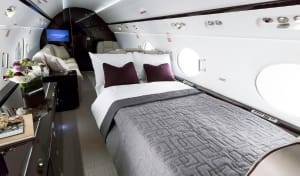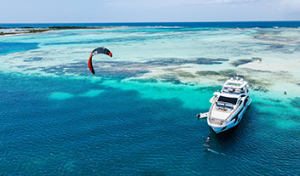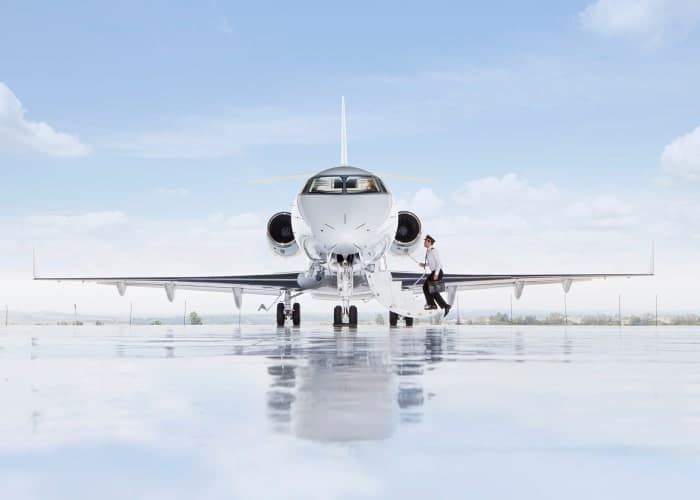Winter can be a difficult time for private jet travel, especially when increased flight volume around the holidays is met with weather-related delays and interruptions. This year, we also expect the global supply chain and aircraft availability issues affecting the private aviation industry to be a potential cause for additional delays. When faced with these concerns, it’s especially important to have a private aviation provider that works with you to mitigate the costs, delays, and frustrations of winter private jet travel.
The Magellan Jets Flight Support Department monitors weather conditions on behalf of all of our jet card owners, members, and on-demand charter customers and prioritizes constant communication with our guests, making sure they know what to expect this time of year. From de-icing to hangar fees, here’s what to expect from your private travel as we head into winter-along with our tips on how to best navigate the winter travel season.
everything you need to know about flying private winter 2021-22
Aircraft De-Icing
In order to remove the buildup of ice and snow on the wings and nose and ensure safe and efficient performance, your aircraft may need to be sprayed with de-icing fluid prior to your departure. The decision to initiate de-icing is done at the discretion of your flight crew, and you may be required to deplane while the aircraft undergoes the de-icing process for your comfort and safety.
De-icing is an extremely important and necessary safety precaution, but if you haven’t accounted for it in the course of planning your travel, it can result in unexpected delays as well as high costs. What you pay for de-icing varies depending on the FBO, the type of fluid used, the amount of fluid needed based on conditions, and the size of your aircraft, but in some instances, it can run as high as $10,000.
How Magellan Mitigates De-Icing Delays And Costs
Our Flight Support Department will always go the extra mile to make your flight experience as smooth as possible. For example, when winter conditions are in play, our aviation experts will look to place your aircraft in a warm hangar overnight, significantly lessening the likelihood it will have to be de-iced. While this will incur hangar fees, those fees are often far less than the average de-icing bill. Taking a jet out of a hangar is also much less time-consuming than waiting in the de-icing line, which means you’ll get where you’re going faster-and be charged for less taxi time.
Flight Support may also move to pre-position your aircraft outside of snow and ice events, allowing your aircraft to arrive warm and on time. They may suggest small adjustments to your schedule or the date of your departure to avoid inclement weather or expected air traffic congestion. Your Private Aviation Consultant or a member of our Flight Support Team will stay in close contact with you throughout the lead-up to your flight, and will contact you to discuss your options should inclement weather be forecast in your flight path.
De-Icing Insurance
When you fly private charter, you pay for any de-icing required for your flight-but Magellan’s Jet Card Owners can purchase de-icing insurance, guaranteeing they won’t pay any fees for de-icing for the entire duration of their jet card. De-icing insurance is priced by jet category, per 25-hour block:
Light Jet – $2,500
Mid-Size – $3,500
Super-Mid – $5,000
Heavy Jet – $6,500
• Explore Our Jet Card Program
Tips for private fliers this winter
Plan For Weather Delays And Disruptions
Our Flight Support Department will inform you if they believe any weather-related issues may factor into your travel, but if you’re flying into or out of a part of the country that typically experiences the effects of winter weather, it’s a good idea to expect these types of interruptions. If de-icing is a probability, adjust your departure time accordingly, as the process may take additional time and delay your takeoff. In addition, you should consider the possibility your flight may have to be diverted to a different airport if weather conditions deteriorate while you’re flying.
Give Us All The Details Of Your Trip
Knowing all of the details about your trip will help our Flight Support Department find the most appropriate solution for you in the event icy weather changes your flight plan. Who are you traveling with? How many passengers will be on your flight? Do you have any hotel or restaurant reservations at your destination? Are you traveling with skis? Most importantly, do you have any flexibility in your departure date or time? This and other information will help us make suggestions to help you avoid or lessen weather interruptions.
Book as far in advance as possible
As availability issues and the supply chain crisis are both expected to continue through the new year, we’ve been strongly suggesting our guests book any and all expected travel as far ahead as possible. When it comes to winter weather, booking early gives our team more time to source alternative aircraft options, pre-position your flight out of the way of wintry weather, and establish the best plan to mitigate delays and interruptions.
Arrive Early For Your Flight
During the winter, it’s especially important to get to the FBO ahead of time-the longer your aircraft sits on the runway getting colder, the higher the likelihood it will need to be de-iced. You may be used to flexibility in private aviation regarding departure times, but during the winter season, you can help yourself stave off de-icing delays and bills by allowing extra time before your departure.
Contact Us With Any Questions Or Concerns About Winter Travel
The Magellan Jets Flight Support Department is dedicated to monitoring weather conditions and relaying information to our guests in order to mitigate the chances any surprises-weather-related or otherwise-affect their trips. They will be working around the clock and through the holidays to make sure our guests are able to enjoy quality time with their loved ones. If you have any questions about winter weather operations, if you’re concerned about weather precautions on an upcoming flight, or if you’d like to inquire about Magellan’s de-icing insurance, please contact your personal aviation consultant or call 877-550-5387 to speak to a private aviation expert.




















